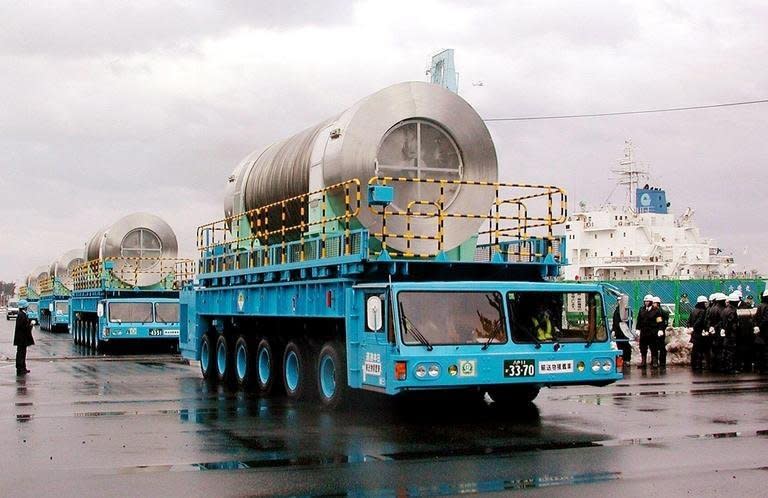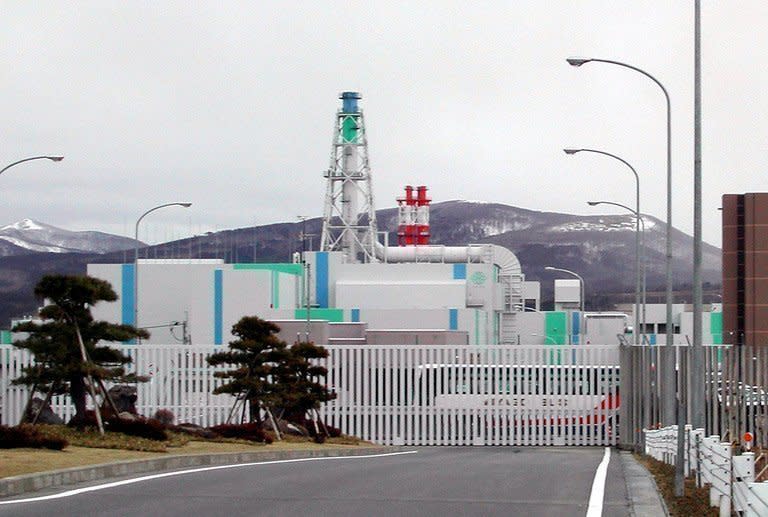Quake risk at Japan atomic recycling plant: experts
Japan's only reprocessing plant for spent nuclear fuel could sit on an active seismic fault vulnerable to a massive earthquake, experts warned Wednesday. If regulators agree they will have to order its closure and Japan would be without any recycling capacity of its own, a government official told AFP on condition of anonymity. This would leave it dependent on other countries and with no way to deal with waste from the Fukushima plant crippled by last year's earthquake and tsunami. Yasutaka Ikeda, assistant professor of geomorphology at Tokyo University, said a nearly 100-kilometre (60-mile) fault runs under the Rokkasho reprocessing plant in northern Japan. "Even though experts' opinions are divided on whether this fault is active or not, I think the possibility of it being an active fault is extremely high, given the evidence," Ikeda told AFP. "This fault could cause an 8-magnitude earthquake, so any nuclear-related facilities in the region are in danger," he said, referring to the Shimokita Peninsula where the Rokkasho plant is located. Mitsuhisa Watanabe, professor of geomorphology at Tokyo University, separately told Wednesday's Tokyo Shimbun that part of an active fault runs directly under the Rokkasho plant, warning it is likely to move when the bigger fault moves. Active faults are those that, amongst other things, have moved within the past 120,000-130,000 years. Under government guidelines atomic installations cannot be sited on a fault if it is still classed as active. The comment came days after government-appointed experts found that a nuclear power plant in the same region may sit atop an active seismic fault. A panel appointed by the Nuclear Regulation Authority (NRA) said Friday fractures in the earth beneath the Higashidori plant's compound on the peninsula may be active faults, meaning it would likely have to be scrapped. An unfinished nuclear fuel storage facility is also on the peninsula, in addition to the recycling plant and the Higashidori power plant. It is also home to another part-built atomic power plant A NRA official told AFP Wednesday the nuclear watchdog "may have to consider whether to conduct additional research at Rokkasho, but for the time being we will watch that being carried out by the plant operator." Operator Japan Nuclear Fuel said last month it would conduct more research on the fault, but a spokesman said the purpose is to back up its claim that the seismic fault is not active. Resource-poor Japan has poured billions of dollars into a nuclear fuel recycling programme, in which uranium and plutonium are extracted from spent fuel for reuse in nuclear power plants. All but two of Japan's nuclear reactors remain offline after being shuttered for regular safety checks after the meltdowns at Fukushima. They must get the go-ahead from the newly-formed NRA before they can be restarted. The only working reactors are at Oi in the west, but experts including Watanabe are investigating whether the fault that runs underneath it is active. Hundreds of thousands were made homeless by the Fukushima accident, and tracts of prime land were left unfarmable after radiation spread across a large area. Anti-nuclear sentiment has run high in Japan, which used to rely on atomic power for around a third of its electricity needs. However, it did not translate into votes for anti-nuclear parties in the weekend election.



